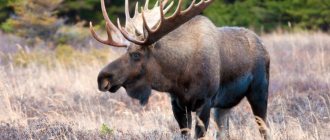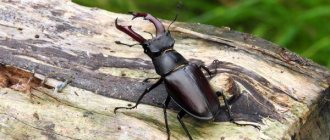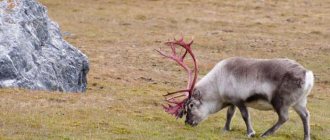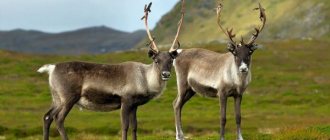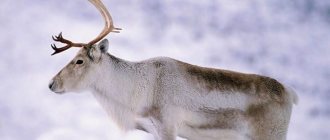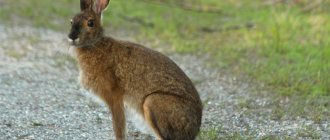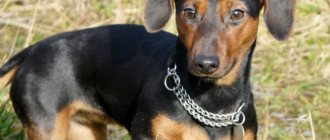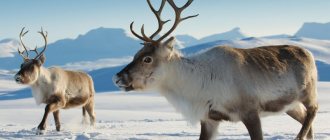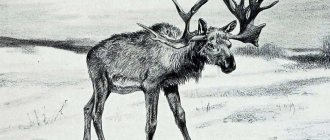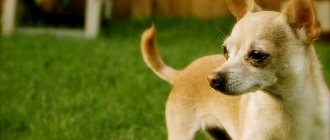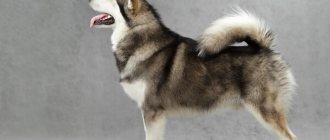What is the difference between elk and deer? What is the difference between these two animals? It would seem that everything is obvious. If you look at them from the outside, then an adult will immediately understand how an elk differs from a deer. Well, if you try to explain this in words, for example, to a child who is asking this question, then everything will not be so simple.
Swap bodies
You should start with the appearance. Although comparison here can play a cruel joke. If the question of how a deer differs from an elk is answered with antlers, this will not be entirely true, although the difference is obvious. To understand this, you need to ask yourself one more question. If we put the antlers of an elk on the head of a deer, what do we get? Is it really a moose? Of course not. This means that this distinctive feature is not suitable. The fact is that only a complex of various features together makes up the image of a particular animal. This is why it is so difficult to explain how an elk differs from a deer. And is it necessary to do this? It’s better to say that this is one type of animal, differing in appearance, habits, and way of existence.
A little about the deer family
The size of deer can vary greatly between representatives. The smallest is the pudú (the size of a hare), and the largest is the elk (the size of a horse). The species is characterized by branched antlers, which only males have (except for water deer, which does not have antlers, but with reindeer, both sexes wear antlers). Animals' horns change every year.
Elk
Deer have rich symbolic meaning for many cultures and peoples. The deer symbol often represents beauty, grandeur and nobility.
Deer
How is an elk different from a deer?
This animal is very large. There are males three meters long, two meters high and weighing 500-700 kilograms. Females also have rather large dimensions, although not as large as males. Deer do not weigh more than 400 kilograms. Moose live in forest and forest-steppe zones. In Russia, most of them live in Western Siberia, Yakutia, and the Ussuri region. They can also be found in northern Europe and Canada. In search of food, moose do not leave their habitat.
These animals can be recognized by their massive body and thin limbs, which end in hooves with leathery membranes. This structure helps the elk search for food in swampy areas and dense thickets. Thanks to this, he can get hard-to-reach food and thus survive in winter and early spring. Elk antlers, unlike deer antlers, are wide and flat. They fully take shape by the time the animal is five years old and grow not upward, but parallel to the surface of the earth. Males grow a beard. Moose do not look as elegant and sophisticated as their counterparts. They also differ in their habit of living alone or in married couples with cubs. Deer live in herds consisting of a male and 7-15 females.
Where does it live?
The habitat of moose extends across the temperate climate zone of the Northern Hemisphere. Their greatest concentration is observed in broad-leaved and mixed forests. Less commonly, animals can be found in such natural areas as steppes, forest-steppes, taiga, and forest-tundra.
The most numerous populations of the animal live in Canada, the northeastern United States, Russia, Scandinavia, and some countries of central Europe.
BUFFALO
Where live
The natural habitat of moose is forests with diverse vegetation, alder, aspen, willow forests, overgrown burnt areas, clearings, mountainous terrain covered with thickets of bushes and trees. In the summer, moose spend a lot of time in the water, so they move closer to rivers, shallow channels and lakes, and swamps.
Moose lead a sedentary lifestyle. With a sufficient food supply, they remain in their territory throughout their lives. An exception is the seasonal migration of animals from regions where large amounts of snow fall in winter. Thick snow cover makes it difficult for the massive animals to move, making them easy prey for predators.
Waterfowl artiodactyl
Another interesting feature is the moose’s love for water, in which it escapes the heat and blood-sucking insects. Often it lies immersed in a pond and feeds without leaving it. In this case, it feeds on algae, moss, and coastal plants that it can reach. At other times, he often, at least twice a day, comes to drink. If he likes an underwater plant, the elk will without fear lower his head under the water and grab the tasty greenery with his teeth. Soon after birth, the mother teaches moose calves to swim, so it is not surprising that adults do this with pleasure and can move in the water at a speed of 10 km/h. In winter, they go out onto the ice, while other reindeer are afraid to do so. But the moose's wide hooves help prevent them from slipping.
Lifestyle
Many subspecies that live in the northern regions are nomadic. In the summer, they find food in forest clearings, and in winter they go into the thicket, since it is easier to find areas that are not heavily covered with snow, this makes it easier to find food and helps them move faster when escaping from predators.
Contrary to the persistent stereotype of deer as a brave animal, many of them have a timid character. They do not allow you to get close to them, and a loud sound can put an entire herd to flight. Also, aggressive individuals are often found among different subspecies. Even among fawns, the games of young animals look less like innocent entertainment for children, and more like a real fight.
However, despite their aggressiveness towards rivals, adult individuals, even during fierce fights, do not often cause severe injuries to each other. As a rule, fights are limited to either a clash of horns, or a reminiscent of boxing, when males, standing on their hind limbs, fight with their front legs.
Interesting fact: But females actually show courage when it comes to protecting their young. The female will without hesitation rush at a predator that has attacked a fawn.
Most often, deer live in small herds of 4–7 individuals. Moreover, each group is assigned its own territory, which they protect from strangers. To mark the boundaries of their properties, animals mark areas with special glands located between their toes.
Animals that live in the mountains, with the onset of frost, descend lower from the high-mountain forests: to places where there is less snow. Moreover, females with their cubs are the first to leave for the winter, and males join later.
Since deer have many enemies in their natural environment, they have learned to run quite quickly. For example, a North American deer or wild fallow deer (a subspecies of deer) running away from wolves can reach speeds of about 65 km/h.
Interesting feature
And one more difference. The deer was never called elk. This concept has been around for a long time. It comes from the word “plow”. This is an item for plowing the earth. The first, simplest tools were a wooden spear and a branch. The end of the weapon was burned or reinforced with a metal tip. From this tool comes the adjective “forged”, that is, branched, twisted. Moose antlers fit this definition. Although previously all animals that had them were called this, it has come down to us only in relation to moose. They often become heroes of fairy tales or cartoons as kind, calm and non-aggressive animals. Is it really important how these animals differ? Each of them is interesting in its own way, but the residents of our country are still closer to it. Children have known him since childhood; they hunt him, they even fear him when they find themselves alone in the forest. Although he himself will never approach a person. Possessing fine hearing, elk can hear even quiet steps at a distance of 1 kilometer.
The man always showed interest in him. Its meat is tasty, its milk is nutritious, and its horns also have uses. Many, especially those who got them while hunting, are proud to have them hanging in their hallway instead of a coat rack. Therefore, experiments are now being carried out on special farms to domesticate this useful animal, so that everything that people can get from it becomes more accessible. These are the differences between deer and elk.
Types and names
The family includes three subfamilies, where there are 51 species. If we consider the varieties of real deer, the main ones are as follows:
- Reindeer (caribou). The animal lives in the tundra, and both females and males have horns. With their help, they clear the snow to get to lichens and moss. In addition, this is the only class of deer that can eat meat, usually small rodents.
- Red deer (the species is divided into the following subspecies: wapiti, wapiti, red deer). The most beautiful representative of deer. There is a white spot under the tail. The horns are characterized by great branching. It lives over a wide geographical range, from Europe to Australia.
- Pudu is the smallest species. There are only a few varieties in the genus: northern and southern puda. It has short, thick fur of a brownish-brown color, the muzzle and back are slightly darker, and in some cases almost black.
- Water or antlerless deer. It is also one of the smallest species. Lives in the forests of the Korean Peninsula and China. This is an excellent swimmer who can cover distances of 2-3 km.
- The Ceylon spotted deer is a subspecies of the Axis. Lives only in Sri Lanka. Animals are active mainly early in the morning and late in the evening, but can be found near watering holes at any time of the day. They feed on grass, fruits and leaves. The herd can contain up to 120 individuals.
- The tufted deer has a black-brown tuft on its head, hence its name. A distinctive feature is the unbranched and very short horns. Lives in the forests of Asia.
Status and population
Despite the fact that deer can easily adapt to any conditions, and today they live on almost the entire planet, certain species are on the verge of extinction. Among them it is necessary to highlight:
- Vulnerable species: Barasinga, Indian sambar, white-faced, maned and Philippine deer.
- Endangered species: Philippine spotted deer, lyre deer.
At the same time, sika and red deer cause the least concern. Their population is increasing, and their habitat covers almost the entire globe. It is very difficult to calculate their approximate number. But we can safely say that they are not in danger of extinction.
An interesting fact regarding rare, and especially endangered species, is that the decline in their population is, to begin with, due to the fact that almost all of them are endemics that inhabit a very limited area, for example, some islands lost in the ocean.
In this case, any deterioration in living conditions, some negative anthropogenic or natural factor can threaten both the population size and the direct existence of a certain species.
Reproduction
Deer lead a harem, polygamous lifestyle; the herd of these animals is led by a strong male who mates with several females. The same male deer protects his ladies from the encroachment of other competing males. In the fight for females, male deer stage real, almost knightly fights, clashing their antlers.
Deer reach sexual maturity early; by the age of two years, a female deer is able to give birth to cubs. Males become sexually mature at 2-3 years. The pregnancy of a doe, depending on the species, lasts 6-9 months. When the time comes for giving birth, the female looks for a cozy and secluded place for this purpose. Usually only one child is born at a time, only in rare cases can there be twins. Small fawns have a spotted color, which serves them as an excellent camouflage from predators.
Only after being born, a small fawn can already stand on its feet, and after another month of breastfeeding, it can already graze grass on its own, although it also continues to feed on its mother’s milk throughout the entire first year of its life.
After a year, the first small bumps on the head of young male deer begin to appear - future luxurious deer antlers.
Conclusions TheDifference.ru
- Elk is the largest animal of the deer family. The male can reach a weight of 700 kg. For representatives of other deer species, the record weight is 400 kg.
- The elk has a special structure of its limbs. Its legs resemble tall and thin stilts with a disproportionately wide base in the hooves. Most deer have legs that are more proportional and shorter.
- All deer, except elk, have antlers that develop vertically relative to the body. Moose antlers are deployed in a horizontal plane and have flat, spade-shaped branches at the ends.
- Unlike deer, which form herds, moose live alone, in pairs, or in small family groups.
- Elk can spend a long time in the water. This is not the case for most deer.
Date of publication: 05/15/2013
Deer and elk, of course, belong to the same family, but in many ways these animals are completely different, and most educated people understand this.
The elk is a large animal, up to two meters tall at the withers (who doesn’t know, the withers are the border between the neck and the body, part of the spine located approximately at the level of the front legs) and weighing almost a ton. His color is dark brown, sometimes grayish, his body is massive, his legs are long, and his muzzle looks more like a bull than a deer. (For this, hunters both here and in English-speaking countries, which will be discussed below, sometimes call moose and moose cows “bulls” and “cows,” respectively.) But the main distinguishing feature of the moose is its antlers. They grow not so much upward as to the sides, have a flat, spade-shaped shape and teeth along the edges, for which the moose is popularly nicknamed “elk” (from the “plow” that they resemble). It would seem that the differences are obvious. But, for example, in translated documentaries, in particular, in series that the BBC has been showing us for many years in a row (through the First and other Russian TV channels), you can sometimes observe the following situation: on the screen there are typical deer, and For some reason they are talking about moose! Or, for example, in Seton-Thompson we read: “It was early autumn. The elk filled the mountains with trumpet sounds.” We are talking about the USA and Canada. Of course, there are also those whom we call “elks”, but elk, and in the mountains - it’s strange... What is the reason for such confusion? As it turns out, in translation difficulties caused by differences in British and American English. In English, elk is Elk . But history decreed that in America this word began to be used to refer to a large deer (red deer of the local subspecies, which in Russian scientific terminology is now called by its Indian name - wapiti ), and for the moose they came up with another designation - Moose . A little later, the term Elk spread to the entire genus of “real” deer (red, spotted and all others whose Latin names begin with the word Cervus, in contrast to elk - Alces, reindeer - Rangifer,
etc.
). By the way, the situation is similar in the French language: the elk animal that lives in Northern and Eastern Europe and further beyond the Urals is called there Elan , and when it comes to the American continent, they talk about the moose Orignal , and the term Elan (Elan du Canada) called the wapiti deer. Modern "international" English, as used by the BBC, is lexically a mixture of British and American words, and the word "elk" is used in it to mean "large deer". Our translators, as a rule, are trained in a purely British version, and our language teaching system does not always keep up with the pace of globalization. So it turns out that someone who should be a “deer” suddenly becomes a “moose”. And that's not good. Article published in issue 01/14/2007 Updated 07/22/2020
What is the difference between elk and deer? What is the difference between these two animals? It would seem that everything is obvious. If you look at them from the outside, then an adult will immediately understand how an elk differs from a deer. Well, if you try to explain this in words, for example, to a child who is asking this question, then everything will not be so simple.
